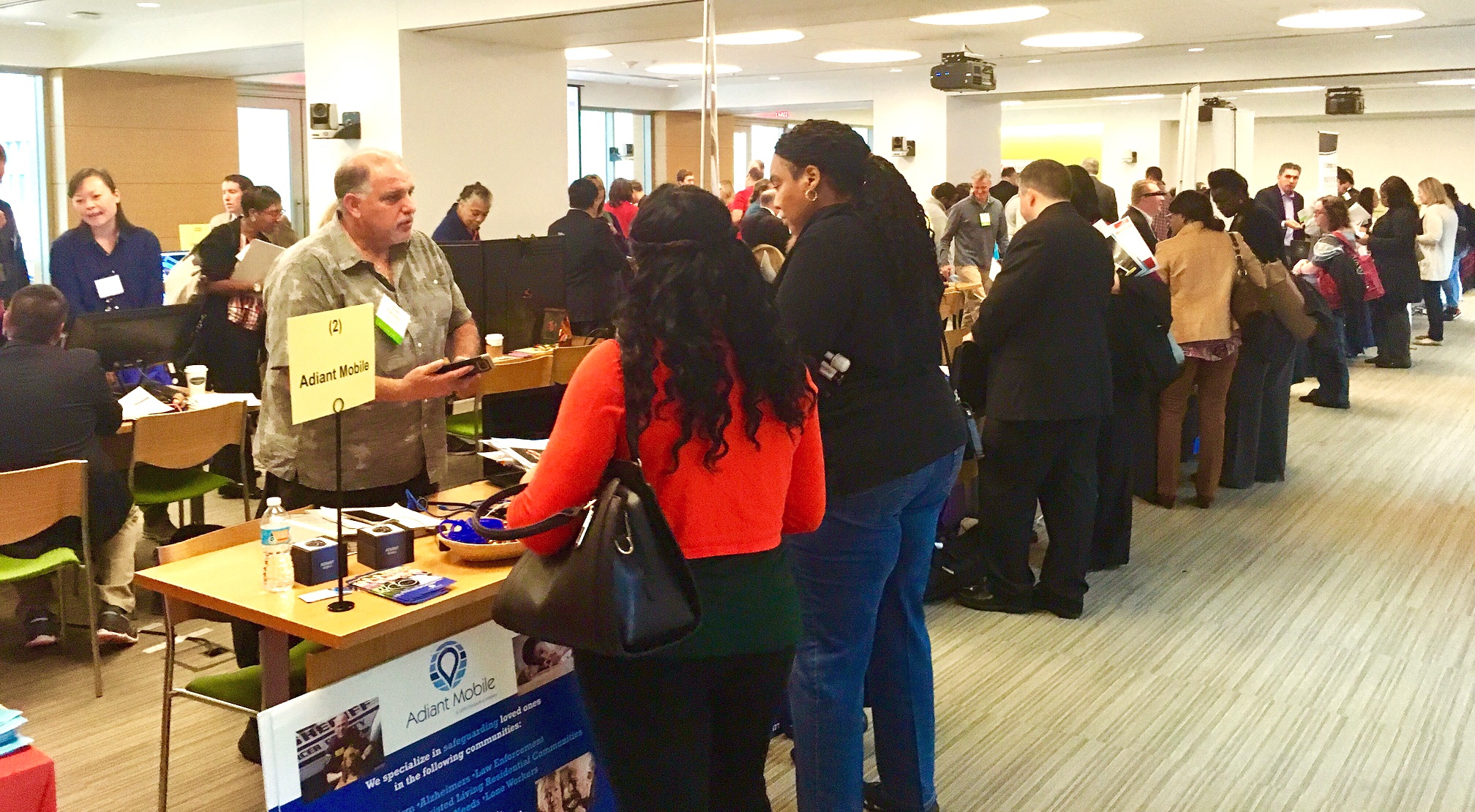
Photo: Vendor exhibition hall
In celebration of National Disability Employment Awareness Month (NDEAM), the U.S. General Services Administration (GSA) held its fourth annual Interagency Accessibility Forum on October 13, 2017. This year’s forum addressed “The Transition to the Revised Section 508 Standards.” While GSA hosted the event in honor of NDEAM, the event also served to help agencies as they transition to the Revised 508 Standards for accessibility. With the Final Standards and Guidelines issued on January 18, 2017, and the year-long transition period coming to a close, the Forum helped representatives from across the Federal government learn more about how the Revised 508 Standards affect existing policies, and how agencies can adapt to these new standards and make accessibility a priority. The event organizers also used crowdsourcing to engage live discussion, and share questions and answers about the 508 transition.
To kick off the Forum, Dominic Sale, Deputy Associate Administrator for Information Integrity and Access in GSA’s Office of Government-wide Policy, opened with the messages that accessibility opens doors for people with disabilities, and that an accessible government is one that serves everyone better.
David Capozzi, Executive Director of the US Access Board, gave the keynote, detailing the history of accessible technology and how it has improved to meet the needs of people with disabilities. For example, in the 1980s and 1990s, we witnessed the first graphical user interfaces and screen reading capabilities developed for blind users. By 2010, 100,000 ATMs in the U.S. had accessibility features to make them usable by those with a sight, hearing, or physical disability. Today, the iPhone is one of the most preferred devices among blind and deaf people, because it offers a variety of accessibility features. Capozzi ended with these poignant lessons learned: challenges to keep technology accessible still exist in government, and people with disabilities will be left behind unless agencies prioritize accessibility.
To wrap up the morning, Hope Adler, who works with the Department of Labor, explained how their Office of Disability Employment Policy’s ePolicyWorks tool uses crowdsourcing to connect stakeholders and citizens through real-time sharing. In this way, stakeholders are engaged in policymaking and people with disabilities are able to be part of the discussion.
The Forum featured 12 breakout sessions which focused on the impact of the Revised 508 Standards, and showcased tools to help agencies gracefully transition to the new Standards. 27 exhibitors also shared their accessibility solutions for public sector software and technology, as well as wearable technology, including an application for smart glasses that enables users to read text in over 100 languages without an internet connection.
Section 508 has been a law for more than 30 years now. In 2016, the U.S. government spent $80 million on information and communication technology (ICT), so accessibility must also be at the forefront of procurement discussions. Discrimination, rather than compliance, remains the biggest risk agencies face, and the transition can be a catalyst to drive change. Update your existing policies, or develop a 508 policy, if you don’t already have one, and educate staff about their responsibilities in this area.
For more information about the 508 refresh, visit the Revised 508 Standards Toolkit, which includes information on Transition Guidance, 508 Program Management, Standards and Training materials. You can review the presentations on the Accessibility Presentations and Workshop Materials page.
Accessibility is something that benefits all users and encourages innovation. In the months ahead, as your agency transitions to the Revised 508 Standards, consider new ways to integrate accessibility and universal design into how your agency works.


